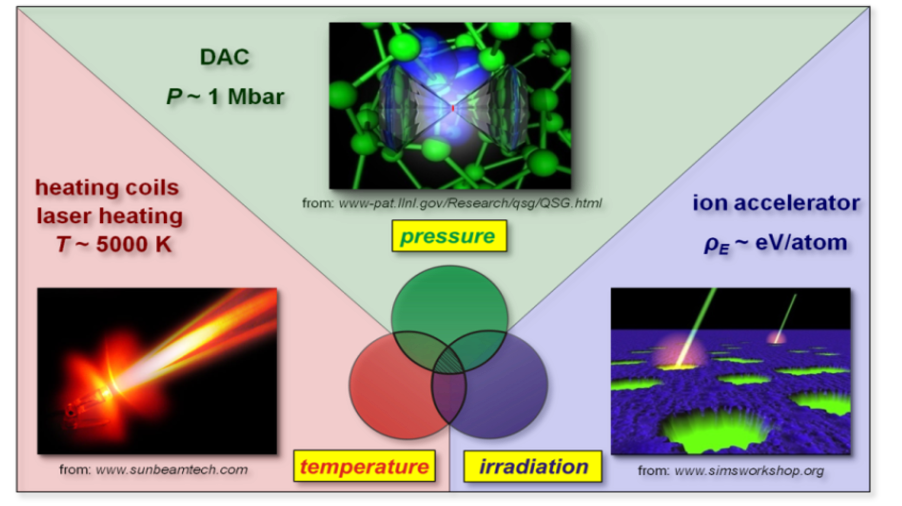5. Defects and Ion Irradiation
5. Defects and Ion Irradiation

The Defects and Ion Irradiation thrust within CDAC explores the effect of intense ionizing radiation on materials, including the formation of defects and other structures in materials on exposure to ion radiation as well as the effects of multiple extreme environments such as irradiation in combination with high pressures and temperatures. CDAC Academic Partner Maik Lang (Tennessee) coordinates research activities in this area, which is concerned with several interrelated topics. These include a comparison of the behavior of carbide and oxide compounds under dense electronic excitation (CDAC students William Cureton and Zach Chaney); analysis of the high-temperature response of carbides after exposure to dense electronic excitation (CDAC students Zach Chaney and John Hirtz); and coupling high-pressure cells with relativistic heavy ion irradiation to study response of materials to multiple extremes (CDAC student John Hirtz). Annealing of ion tracks in apatite under pressure has recently been characterized in-situ by small angle x-ray scattering [1]. Upcoming studies in this area include work on pressurized UO2 doped with lanthanide atoms using appropriate surrogate materials (doped CeO2). Development of capabilities at HPCAT to handle new classes of experiments in this area, including x-ray absorption spectroscopy coupled with x-ray diffraction on the same samples at high temperature and pressure, are proceeding with the collaboration of HPCAT staff. These include the details of phase transformation behavior and P-V-T equation of state measurements of irradiated materials.
[1] D. Schauries et al., Sci. Rep.10, 1367 (2020).